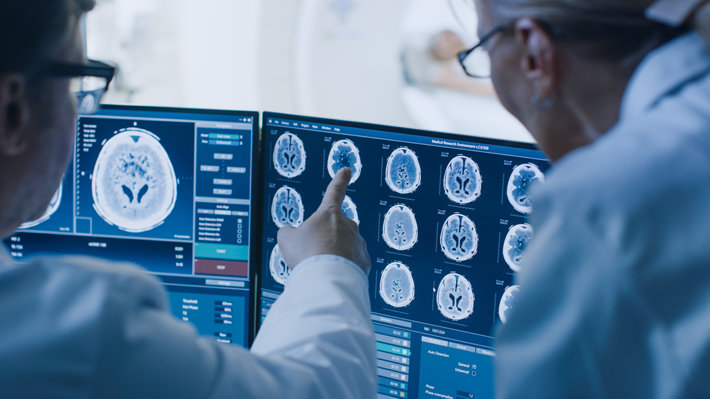What Is the Cost of Drinking Alcohol?

Though alcohol consumption has been more than normalized within American culture, each year brings more findings on the serious health implications of drinking. For example, a recent study found that 700,000 annual cancer cases are brought on by alcohol consumption. When will Americans recognize the risks of alcohol and stop drinking? How much more evidence is needed to make it clear that alcohol is harmful and poses risks, even when one does not drink to excess?
Alcohol and Cancer
Researchers at the Lancet recently published findings showing a causal relationship between alcohol consumption and cancer. Globally, an estimated 741,300 new cancer cases in 2020 were attributable to alcohol consumption, a number that represents about 4% of all cancer cases. And while the largest burden of alcohol-attributable cancer was represented by heavy drinking (346,400 cases) and risky drinking (291,800 cases), moderate alcohol consumption was responsible for at least 103,100 cancer cases (representing 14% of all alcohol-related cancer cases).
For the longest time, people have believed that moderate drinking is safe, with zero health risks. This could not be further from the truth. While the health risks from drinking alcohol do increase dramatically the more alcohol one consumes and the more often they consume it, what has been traditionally called “normal” or “moderate” drinking does carry some risk.
“Our study highlights the contribution of even relatively low levels of drinking to rates of cancer, which is concerning, but also suggests that small changes to public drinking behavior could positively impact future cancer rates.”
The recent findings by Lancet researchers are just one example. Quoting study co-author Harriet Rumgay of the International Agency for Research on Cancer, “Our study highlights the contribution of even relatively low levels of drinking to rates of cancer, which is concerning, but also suggests that small changes to public drinking behavior could positively impact future cancer rates. We urgently need to raise awareness about the link between alcohol consumption and cancer risk among policy makers and the general public. Public health strategies—such as reduced alcohol availability, labeling alcohol products with a health warning, and marketing bans—could reduce rates of alcohol-driven cancer.”
Health Risks Abound; What Happens When People Consume Alcohol

Alcohol is not only dangerous when consumed to excess. Drinking alcohol, especially when one drinks alcohol regularly and over time, can contribute to cancer development by causing DNA damage, by affecting hormone production, and by worsening the cancer-causing effects of tobacco and other substances. Unfortunately, according to the National Institute on Alcohol Abuse and Alcoholism, at least half of American adults report drinking alcohol regularly.
It’s been proven that there is a clear pattern between alcohol and various types of cancer, including:
- Head and neck cancer
- Esophageal cancer
- Liver cancer
- Breast cancer
- Colorectal cancer
As if that were not harmful enough, alcohol consumption and its causal relationship to multiple types of cancer is just one of the costs of drinking. There are many others. Again from NIAAA research:
Drinking alcohol can have a detrimental effect on the brain, negatively impacting neural pathways and affecting how the brain looks and works.
Alcohol consumption causes significant harm to one’s heart, causing problems such as cardiomyopathy, arrhythmias, stroke, and high blood pressure.
Consuming alcohol can take a dramatic, sometimes even life-threatening toll on one’s liver. As the liver is the organ that processes alcohol, it can experience multiple critical health issues from being made to process too much alcohol too often, including steatosis, alcoholic hepatitis, fibrosis, and cirrhosis.
Alcohol harms the pancreas too, causing the pancreas to produce toxic substances that eventually lead to pancreatitis. Pancreatitis is a dangerous inflammation and swelling of the blood vessels in the pancreas.
Yet another toll that alcohol takes on the human body is the harm that alcohol has on one’s immune system. Given the recent COVID-19 pandemic and the serious public health toll of that highly contagious illness, Americans would do well to consider the effects that alcohol consumption has on their body’s natural immune response. Scientists at the NIAAA already know that drinking too much alcohol can make one more likely to contract diseases like pneumonia and tuberculosis, even up to 24 hours after drinking. One can surmise that drinking alcohol would also make one more likely to contract COVID-19.
The Damage and its Scope; How Alcohol Harms Our Society
While the health implications of alcohol consumption are clear enough, what about the overall, societal cost of alcohol consumption? What is the scope of that harm? Following are some data points that put the problem into perspective:
- According to the Center on Addiction and Substance Abuse at Columbia University, about 25% to 40% of all patients in U.S. general hospital beds (not including maternity or intensive care) are being treated for complications of alcohol-related problems.
- The monetary cost of alcohol consumption is quite severe. According to the NIAAA, in 2010 alcohol misuse cost the United States about $249 billion, with three-quarters of that cost coming from binge drinking.

- Another cost to consider is alcohol consumption’s effect on the family members and loved ones of those who use alcohol. According to one report, the children of alcohol addicts admitted to the hospital average 62 percent more hospital days, and 29 percent longer stays, as compared to children of non-alcohol-addicted parents.
- Alcohol consumption has a serious cost on America’s youth. Drunk driving is a leading cause of death among teens, and it is also associated with homicides, suicides, and drownings, the next three leading causes of death among young people. According to the NIAAA, “Each year, approximately 5,000 young people under the age of 21 die as a result of underage drinking; this includes about 1,900 deaths from motor vehicle crashes, 1,600 as a result of homicides, 300 from suicide, as well as hundreds from other injuries such as falls, burns, and drownings.”
Addiction Treatment; What to Do When Alcohol Consumption Becomes Uncontrollable
Alcohol consumption takes a serious toll on the American people, with the harm from drinking manifesting itself in many different ways. For some, dropping alcohol consumption is as simple as recognizing the risk factors, deciding to stop drinking, and then doing just that. But for others, ceasing alcohol consumption is not something they can do on their own. If you know someone who is drinking alcohol and who cannot stop drinking it on their own, make sure they get professional help as soon as possible. Help them find a drug and alcohol addiction treatment center before it’s too late.
Sources:
- https://www.thelancet.com/journals/lanonc/article/PIIS1470-2045(21)00279-5/fulltext
- https://www.usnews.com/news/health-news/articles/2021-07-14/alcohol-tied-to-740-000-cancer-cases-worldwide-in-2020
- https://www.niaaa.nih.gov/publications/brochures-and-fact-sheets/alcohol-facts-and-statistics
- https://www.niaaa.nih.gov/alcohols-effects-health/alcohols-effects-body#
- https://digitalcommons.usm.maine.edu/healthpolicy/274/?utm_source=digitalcommons.usm.maine.edu%2Fhealthpolicy%2F274&utm_medium=PDF&utm_campaign=PDFCoverPages
- https://www.ojp.gov/pdffiles1/Photocopy/127710NCJRS.pdf
- https://pubs.niaaa.nih.gov/publications/AA67/AA67.htm


